#Taxonomy
Text

Phylogenetic Classification of Living and Fossil Ray-Finned Fishes (Actinopterygii)
Thomas J. Near, Christine E. Thacker
Abstract
Classification of the tremendous diversity of ray-finned fishes (Actinopterygii) began with the designation of taxonomic groups on the basis of morphological similarity.
Starting in the late 1960s morphological phylogenetics became the basis for the classification of Actinopterygii but failed to resolve many relationships, particularly among lineages within the hyperdiverse Percomorpha.
The introduction of molecular phylogenetics led to a dramatic reconfiguration of actinopterygian phylogeny. Refined phylogenetic resolution afforded by molecular studies revealed an uneven diversity among actinopterygian lineages, resulting in a proliferation of redundant group names in Linnean-ranked classifications.
Here we provide an unranked phylogenetic classification for actinopterygian fishes based on a summary phylogeny of 830 lineages of ray-finned fishes that includes all currently recognized actinopterygian taxonomic families and 287 fossil taxa.
We provide phylogenetic definitions for 90 clade names and review seven previously defined names. For each of the 97 clade names, we review the etymology of the clade name, clade species diversity and constituent lineages, clade diagnostic morphological apomorphies, review synonyms, and provide a discussion of the clade's nomenclatural and systematic history.
The new classification is free of redundant group names and includes only one new name among the 97 clade names we review and describe, yielding a comprehensive classification that is based explicitly on the phylogeny of ray-finned fishes that has emerged in the 21st century and rests on the foundation of the previous 200 years of research on the systematics of ray-finned fishes.
Read the paper here:
Phylogenetic Classification of Living and Fossil Ray-Finned Fishes (Actinopterygii) (bioone.org)
25 notes
·
View notes
Text
Being autistic is weird because I think I'd be entirely entirely immune to the maddening effects of witnessing an Elder God but learning that barnacles are arthropods rather than molluscs nearly gave me an existential crisis
13K notes
·
View notes
Text
Below the poll is a series of animal images labeled A through J. A is the least close to the birds we have today; J is the closest. If you encountered these animals in the wild, which would you call birds? If you pick a higher up option, then that means you consider all the below ones birds as well - so if you pick A, then BCDEFGHIJ are all birds. If you pick J, only J is a bird.
A:

B:
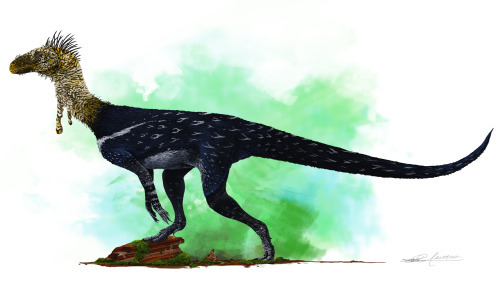
C:

D:

E:
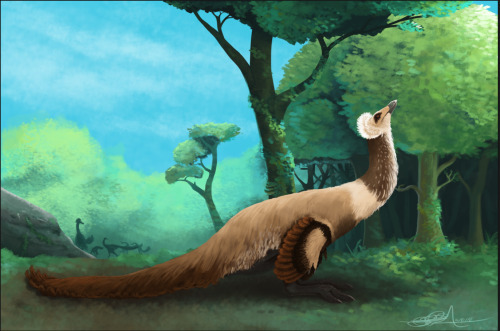
F:
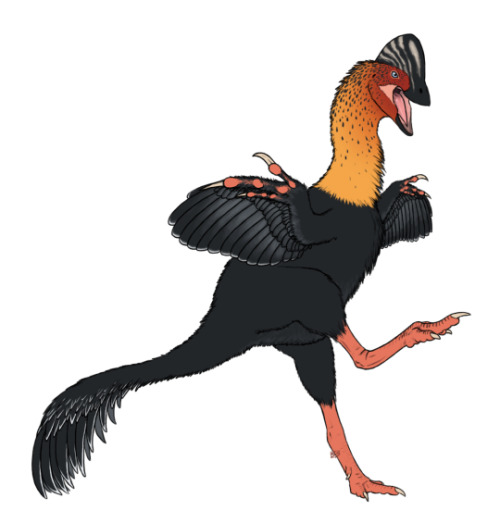
G:

H:
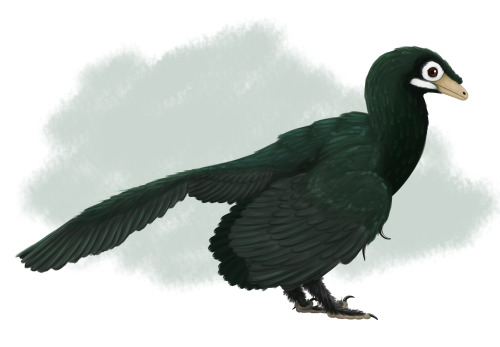
I:
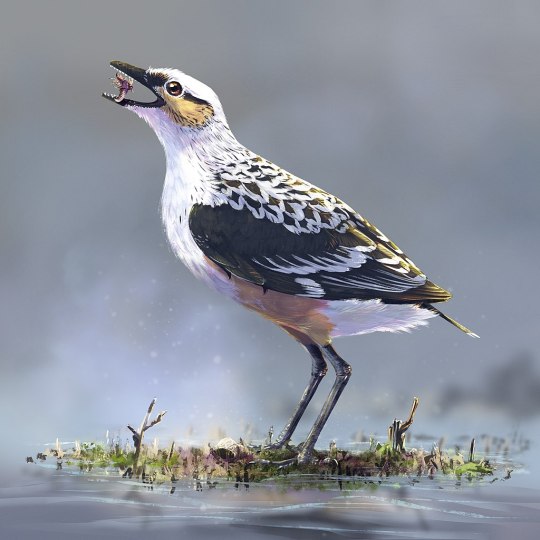
J:

PLEASE REBLOG THIS SO IT CAN LEAVE PALAEOBLR. I NEED PEOPLE WHO DON'T RECOGNIZE THESE ANIMALS ON SIGHT TO VOTE.
I apologize to all of y'all with vision impairments for whom this poll is inaccessible. Alas, this is an experiment, and I cannot name the taxa. Thank you.
All alt text includes artist attribution; I did not make these pictures myself.
#palaeoblr#dinosaurs#birds#pterosaurs#prehistoric life#WHAT ARE BIRDS#bird political spectrum#taxonomy#classification#cladistics#phylogenetics
19K notes
·
View notes
Text
some other taxonomic facts for you to get mad at evolution for, instead of "birds are dinosaurs"
"Insects are Crustaceans" (Pancrustacea)
"Dolphins are Hoofed Mammals" (Artiodactyl)
"Mushrooms are closer to Animals than they are to Plants" (Opisthokont)
"Hyenas are Cat-like" (Feliformia)
"Herpetology is a LYING BASTARD since Amphibians are equally close to Mammals and Reptiles, and there's no reason it should be included like that. if anything, Herpetology should be a parent science of Ornithology, since birds are reptiles. why the fuck are toads here??" (Amniota, Sauria)
"really, we're all just fish" (Sarcopterygii)
11K notes
·
View notes
Text
On the one hand, it's true that the way Dungeons & Dragons defines terms like "sorcerer" and "warlock" and "wizard" is really only relevant to Dungeons & Dragons and its associated media – indeed, how these terms are used isn't even consistent between editions of D&D! – and trying to apply them in other contexts is rarely productive.
On the other hand, it's not true that these sorts of fine-grained taxonomies of types of magic are strictly a D&D-ism and never occur elsewhere. That folks make this argument is typically a symptom of being unfamiliar with Dungeons & Dragons' source material. D&D's main inspirations are American literary sword and sorcery fantasy spanning roughly the 1930s through the early 1980s, and fine-grained taxonomies of magic users absolutely do appear in these sources; they just aren't anything like as consistent as the folks who try to cram everything into the sorcerer/warlock/wizard model would prefer.
For example, in Lyndon Hardy's "Five Magics" series, the five types of magical practitioners are:
Alchemists: Drawing forth the hidden virtues of common materials to craft magic potions; limited by the fact that the outcomes of their formulas are partially random.
Magicians: Crafting enchanted items through complex manufacturing procedures; limited by the fact that each step in the procedure must be performed perfectly with no margin for error.
Sorcerers: Speaking verbal formulas to basically hack other people's minds, permitting illusion-craft and mind control; limited by the fact that the exercise of their art eventually kills them.
Thaumaturges: Shaping matter by manipulating miniature models; limited by the need to draw on outside sources like fires or flywheels to make up the resulting kinetic energy deficit.
Wizards: Summoning and binding demons from other dimensions; limited by the fact that the binding ritual exposes them to mental domination by the summoned demon if their will is weak.
"Warlock", meanwhile, isn't a type of practitioner, but does appear as pejorative term for a wizard who's lost a contest of wills with one of their own summoned demons.
Conversely, Lawrence Watt-Evans' "Legends of Ethshar" series includes such types of magic-users as:
Sorcerers: Channelling power through metal talismans to produce fixed effects; in the time of the novels, talisman-craft is largely a lost art, and most sorcerers use found or inherited talismans.
Theurges: Summoning gods; the setting's gods have no interest in human worship, but are bound not to interfere in the mortal world unless summoned, and are thus amenable to cutting deals.
Warlocks: Wielding X-Men style psychokinesis by virtue of their attunement to the telepathic whispers emanating from the wreckage of a crashed alien starship. (They're the edgy ones!)
Witches: Producing improvisational effects mostly related to healing, telepathy, precognition, and minor telekinesis by drawing on their own internal energy.
Wizards: Drawing down the infinite power of Chaos and shaping it with complex rituals. Basically D&D wizards, albeit with a much greater propensity for exploding.
You'll note that both taxonomies include something called a "sorcerer", something called a "warlock", and something called a "wizard", but what those terms mean in their respective contexts agrees neither with the Dungeons & Dragons definitions, nor with each other.
(Admittedly, these examples are from the 1980s, and are thus not free of D&D's influence; I picked them because they both happened to use all three of the terms in question in ways that are at odds with how D&D uses them. You can find similar taxonomies of magic use in earlier works, but I would have had to use many more examples to offer multiple competing definitions of each of "sorcerer", "warlock" and "wizard", and this post is already long enough!)
So basically what I'm saying is giving people a hard time about using these terms "wrong" – particularly if your objection is that they're not using them in a way that's congruent with however D&D's flavour of the week uses them – makes you a dick, but simply having this sort of taxonomy has a rich history within the genre. Wizard phylogeny is a time-honoured tradition!
#gaming#tabletop roleplaying#tabletop rpgs#dungeons & dragons#d&d#worldbuilding#taxonomy#phylogeny#media#literature#history#literary history#death mention
3K notes
·
View notes
Note
I'm sorry... snake paper? Are things heating up in the snake researcher fandom?
16 February 2024: A team of researchers (including a generally well-respected anaconda expert) found minimal and partly contradictory genetic differences in green anacondas over an enormous area, summarily dismissed all previous work on the taxonomy of green anacondas, and gave the mitochondrial lineage concerned a new name, along the way making some huge fumbles that show plainly that they have no idea how taxonomy works or what certain technical terms mean. They published the work in a journal from a suspect publishing house that is known to rush, skip, or ignore peer review as and when it suits them. And apparently there was some suspicious funding involved, though I don’t know much about that. They made a media storm with ‘a new anaconda!’ but within minutes there were people raising huge red flags about the paper, for the reasons enumerated above and others.
The response from ‘the community’ has been swift and harsh, but mostly fair, in my view. The discussion on ResearchGate reflects this pretty well. There are some bad takes about keeping ‘wokism’ out of science; I would argue that it remains critical to incorporate native peoples, knowledge, and languages into taxonomic work—just not the way this was done, in flagrant and intentional conflict with the established methods and protocols. There are also responses in the discussion by the lead author that show that he is evidently impervious to all of this criticism, and stands by the belief that the work and taxonomic reasoning is sound.
19 March 2024: two papers were published simultaneously in Bionomia, that both enumerate and rebut the problems of the original paper. And I know there are more on the way, though I don’t know if they are all going to be completed now that two responses have already been published.
The one thing I would weigh in on from my perspective is that it is the *taxonomy*, and not necessarily the evidence presented in the paper, that is the biggest problem. Species are described based on mitochondrial data alone all the time. Some of the results are quite interesting. But the taxonomy of the paper is a mess, full of contradictions, cherry-picking, and terminological errors. In the hands of competent taxonomists, the work might have been much more difficult to dispute. But also, no competent taxonomist would have assigned a new name to this lineage; there are too many existing names that would have priority, if it is worth recognising.
Undoing public perception of there being a new anaconda species will take years, if it can ever really be achieved. Always easier for media stories to go around than corrections.
TL;DR big snake paper made big mistakes, and within a month was dismissed. It has probably done lasting damage to perception of anaconda diversity.
2K notes
·
View notes
Text
Big news for bird names: American Ornithological Society to replace eponyms
AOS intends to change all offensive and eponymous (named after people) common names of birds in the USA and Canada.
Renaming these species will be done with involvement of the public and overseen by a new committee made up of ornithologists, social scientists, and communications and taxonomy experts.
AOS will work with the ornithological societies of Central and South America determine who in these regions will maintain stewardship of common English names.
AOS announcement: https://americanornithology.org/about/english-bird-names-project/american-ornithological-society-council-statement-on-english-bird-names
More information under the cut.
How do bird names work? Scientific names (binomials like Zonotrichia albicollis) are set by the International Commission on Zoological Nomenclature. These names are meant to be unique, unchanging, and universally recognized. Common names, on the other hand, are more fluid. The American Ornithological Society is the recognized authority on English-language common names for North American birds, published in their annual Checklist.
The larger context. Ornithologists name birds after people to commemorate those individuals, but this create problems. What do you do when a common name is racist, or when a bird is named after someone who, frankly, sucked? AOS has changed bird names for both of these reasons already.
In 2000 AOS changes the common name of Clangula hyemalis from a racist word for Native women to Long-tailed Duck (although at the time, they denied it was because of "political correctness")
2021: AOS changes the common name of Rhynchophanes mccownii from McCown's Longspur to Thick-billed Longspur. McCown was a Confederate. The push to rename this bird was a flashpoint in the #birdnames4birds movement.
Why not decide one-by-one? Sometimes it's obvious. For example, John James Audubon was a grave-robbing, slave-owning racist; birds such as Audubon's Oriole and Audubon's Shearwater are named after him. Although the National Audubon Society has voted to keep their name ("won't someone consider the branding"), many chapters have changed their names, e.g. the Chicaco Bird Alliance. Other individuals with birds named after them are less well-known or clear-cut in how much they did or did not suck. Removing all eponyms, rather than debating who sucks on a case-by-case basis, will cut down on the arguments.
How will this actually happen? It's not yet clear. Any free-for-all-poll might result in some Birdy McBirdFaces. No timeline either. But it sounds like this really is happening!
4K notes
·
View notes
Text
Scott Pilgrim Taxonomy
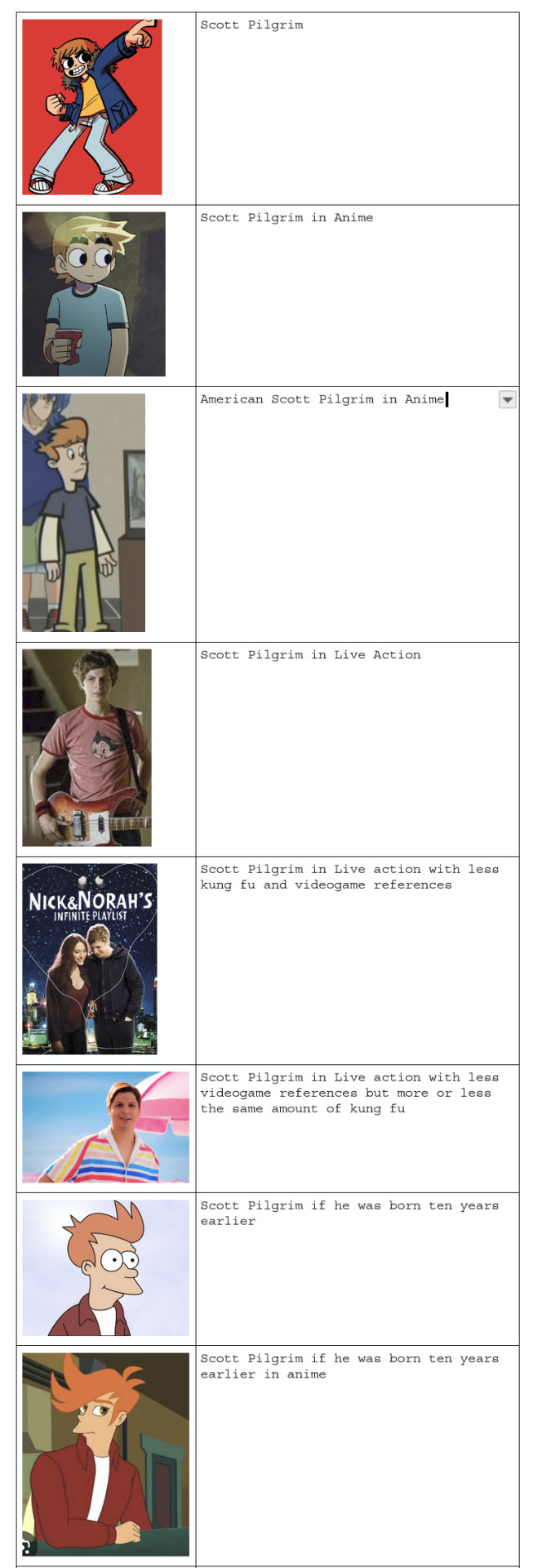


#Scott Pilgrim#Scott Pilgrim Takes Off#Scott Pilgrim vs the World#Bryan Lee O Malley#Taxonomy#Kappa Mikey#Barbie#The Barbie Movie#Micheal Cera#Futurama#neil cicierega#Neil Young#Jack Stauber#shitpost#bee and puppycat spoilers
2K notes
·
View notes
Text
Teaching 5-year-olds about animal classification, fingernails dug into my palms, jaw clenched, just barely holding back telling them about how fish are fake fish are fake fish are fake
6K notes
·
View notes
Text
in zoology, animal species are given standard "latin" names consisting of two words, the genus name and the species name. typically, the genus name is a noun, and the species name is an adjective. following the rules of latin grammar, adjectives need to agree with nouns with grammatical gender, so if the genus name is a feminine latin noun then all species of that genus are given (in principle) adjectives marked with feminine latin suffixes.
in practice of course, new genus names don't always use actual latin words, so these latin grammatical gender rules need to be grafted onto words that aren't really latin. and this is where one of the weirdest conventions of zoological binomial nomenclature comes in!
how exactly do you determine what the latin grammatical gender of a word is if it isn't a latin word? according to the ICZN, it's simple:
if the word is from greek, use its gender in greek
otherwise, if the word is from a modern european language with grammatical gender that uses the latin alphabet, use the gender in the source language (yes it is that specific)
otherwise, if the name ends with -a it's feminine
otherwise, if the name ends with -um, -u, or -o it's neuter
otherwise, it's masculine
unless of course if the zoologist with naming dibs says explicitly that they think this genus should have an irregular gender.
anyway these rules are fascinating to me. why are they this specific? grammatical gender systems compatible with latin's adjective suffixes are found throughout the entire indo-european language family, so why restrict it to modern european latin-script languages (and greek)? I don't know!
1K notes
·
View notes
Text

🕊️🍉💚
In solidarity with the people of Palestine.
(A contribution for @freewatermelonartjam )
#I live in a country that has continuously turned down protest requests and discourages people from displaying any political symbols.#Any form of activism is tightly restricted or kept subtle#hence this “educational animal poster” was made.#This artwork may be subtle in speech but my stance and views are not. Genocide is genocide.#free palestine#palestine#free gaza#ceasfire now#art for palestine#gaza genocide#gaza#apartheid#palestine mountain gazelle#Gazella gazella#mountain gazelle#animal art#zoology#taxonomy#wildlife art
1K notes
·
View notes
Text
Mammologists: It is my greatest goal in life to have the honor of naming a newly descibed species
Entomologists: I had to name 50 new guys last year and I'm fucking sick of it
Herpetologists: I sure hope you guys like puns
3K notes
·
View notes
Text

Freshwater Fish of North America 🎣✨
this is Novembers monthly postcard along with a sockeye salmon sticker!
#fish#fishes#salmon#catfish#trout#rainbow trout#cabincore#nature#nature aesthetic#taxonomy#taxonomy poster#nature art#nature artist#artists on tumblr#mf pike calling me
9K notes
·
View notes
Text
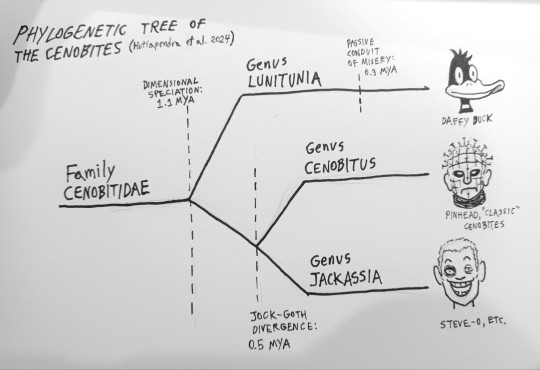
Phylogenetic tree of the Cenobites
915 notes
·
View notes
Text
I've just had a very trying time in the comments section and I need to know.

#dont come at me about using the word 'believe'#you know what im trying to convey#no judgement I just need to have a silly little poll#and i have a large enough follower count to want to know my audience#evolution#science#biology#taxonomy
852 notes
·
View notes
Text
Microfiction: A story told in no more than one thousand words.
Nanofiction: A story told in no more than one hundred words.
Picofiction: A story told in no more than ten words.
Femtofiction: A story told in no more than one word.
Attofiction: A story told in no more than one letter.
Zeptofiction: A story told in no more than one punctuation mark or diacritic.
Yoctofiction: A story told by gesturing helplessly toward one's keyboard.
5K notes
·
View notes